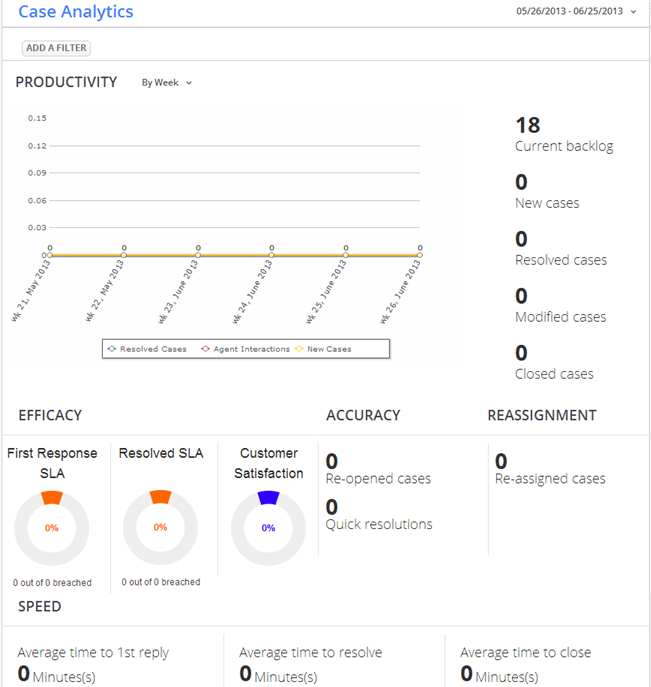Difference between revisions of "Dashboards"
imported>Aeric |
imported>Aeric |
||
| Line 25: | Line 25: | ||
{{:Working with Home Pages}} | {{:Working with Home Pages}} | ||
{{:Manage Widgets}} | {{:Manage Widgets}} | ||
<noinclude> | <noinclude> | ||
Revision as of 02:57, 22 October 2013
A Dashboard can be customized with a collection of Widgets you can use to manage your tasks, get a high-level view of your business, and see your metrics at a glance.
About the Home Page / Dashboard
A Home Page is a dashboard that displays real-time information such as key performance indicators, dynamic reports containing new or updated information, or a person's current list of tasks. Each type of information is contained in a Widget placed on the Dashboard.
In the Home Page, you can:
Managers and Supervisors often build custom Home Pages to monitoring the data they're interested in. The sample home page below contains a variety of Widgets that display Case management metrics.
Role-Based Home Pages
Every application comes with a built-in customizable Home Page that you can use to bring specific data from the application forward. With the ability to create multiple Home Pages, you can also designate specific pages for a specific team, role, or user.
For Example: in an IT asset tracking application, members of the IT team may want to see basic inventory information, but members of the finance team want more data about the financial impact of assets to quarterly schedules. This can be accomplished by creating unique page views of the same data and assigning them as the default to a team, role, or user.
With a simple role assignment, you can lock out changes to the Home Page in an application. This is especially helpful for users, who generally want some consistency when they visit a home page. Users can always create a new Page and mark it as their default page.
- Learn More: Visibility
